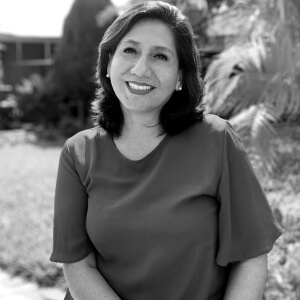Auditory Stimulation in Infants


Written and verified by the neuroeducator Nadia Yépez Suarez
When you find out you’re pregnant, you’ll surely look for the best possibilities for your little one. Therefore, you’ll perform certain activities to help them in their overall development, such as auditory stimulation.
Now, do you think your baby will understand if you talk and sing to them while they’re still in your womb? And if so, do you know what you can do to promote their auditory development? Here’s all the information you need.
The development of the auditory sense
According to Munar, Roselló, and colleagues, the sense of hearing matures throughout a child’s life and this process begins in the mother’s womb.
Boothroyd points out that some structures of the middle ear (called ossicles) mature in the eighth month of gestation, but the development of the auditory system doesn’t end at birth. On the one hand, myelination of the auditory nerve is complete by 6 months of age, the tympanic membrane reaches adult size in the baby’s second year of life, and maturation of the auditory cortex continues until the age of 5 years.
Despite this, it should be noted that the fetus can perceive acoustic stimuli (physical waves) through its ears and this allows it to begin to integrate messages from the surrounding world into its brain. Little by little, the physical stimulus will become an auditory stimulus, which is capable of giving meaning to what is heard.
Therefore, the auditory system of babies requires some time of maturation, and also, people in the environment must talk to them and provide them with sound experiences so that their brains can integrate (decode) the information perceived from the senses.

Sensation and perception
There’s a difference between sensation and sensory perception. Sensation is the mere process of detecting the presence of a stimulus, while perception involves a cognitive component to decode the sensation. That is, the brain recognizes, integrates, and interprets the sensation. Three different stages are identified from the input of the physical sound (sensation) to the identification of the information (perception):
- Transmission: When a sound enters from outside through the ear canal, it does so as sound waves or as physical energy (acoustic stimulus). Then, it’s converted into mechanical energy when it reaches the middle ear. Finally, it reaches the inner ear (cochlea) and is converted into hydraulic energy (fluids).
- Transduction: This hydraulic energy reaches the organ of Corti and is transformed into electrical energy or action potential.
- Vehiculization: The electrical energy reaches the brain, where it’s cognitively decoded to interpret the sound information from the outside with all its qualities.
For the aforementioned reasons, in order to hear we must have a complete and mature auditory pathway. But to decode the sound information, we must have developed certain cognitive skills, such as the ability to listen attentively, memory, and linguistic comprehension, among others.

Activities for your baby’s auditory stimulation
As mentioned above, the maturation of hearing begins in the womb. Therefore, here are some recommendations to ensure good auditory stimulation for your baby:
- Offer them sounds that are stored in their memory, such as your or the dad’s voice, the usual sounds of the environment in which they live, or their own name.
- Help your baby identify where the sound is coming from. From your baby’s first months, you can stand behind them and play while moving a sound object. Your little one will turn their head toward the source of the sound. When they’re 3 years old, you can blindfold them and play the same game.
- Teach them to identify the distance of a sound. When your child has enough language, you can play a game of making a sound near and far away from your child and ask them to estimate how far away they heard it.
- Speak to your child in a soft, melodious voice. When you transmit pleasant sounds, you help predispose your child to active listening.
- Make onomatopoeic sounds of animals, the environment, or nature. This will favor the cognitive identification of the sound and will also favor the development of oral language.
- Speak clearly and without diminutives so that the child learns the correct vocabulary.
Adult participation is key in the development of children
As you can see, adult participation in the family environment and at school is very important. In this way, you’ll provide your baby with the necessary stimuli to increase the brain’s neural networks and to relate sounds to their meanings. Finally, keep in mind that the more words they have stored in their memory, the easier it’ll be for them to understand messages.
The ability to listen and the ability to understand are different, but we need the former to achieve the latter. Therefore, help your baby develop their sense of hearing through play and in a natural way.
When you find out you’re pregnant, you’ll surely look for the best possibilities for your little one. Therefore, you’ll perform certain activities to help them in their overall development, such as auditory stimulation.
Now, do you think your baby will understand if you talk and sing to them while they’re still in your womb? And if so, do you know what you can do to promote their auditory development? Here’s all the information you need.
The development of the auditory sense
According to Munar, Roselló, and colleagues, the sense of hearing matures throughout a child’s life and this process begins in the mother’s womb.
Boothroyd points out that some structures of the middle ear (called ossicles) mature in the eighth month of gestation, but the development of the auditory system doesn’t end at birth. On the one hand, myelination of the auditory nerve is complete by 6 months of age, the tympanic membrane reaches adult size in the baby’s second year of life, and maturation of the auditory cortex continues until the age of 5 years.
Despite this, it should be noted that the fetus can perceive acoustic stimuli (physical waves) through its ears and this allows it to begin to integrate messages from the surrounding world into its brain. Little by little, the physical stimulus will become an auditory stimulus, which is capable of giving meaning to what is heard.
Therefore, the auditory system of babies requires some time of maturation, and also, people in the environment must talk to them and provide them with sound experiences so that their brains can integrate (decode) the information perceived from the senses.

Sensation and perception
There’s a difference between sensation and sensory perception. Sensation is the mere process of detecting the presence of a stimulus, while perception involves a cognitive component to decode the sensation. That is, the brain recognizes, integrates, and interprets the sensation. Three different stages are identified from the input of the physical sound (sensation) to the identification of the information (perception):
- Transmission: When a sound enters from outside through the ear canal, it does so as sound waves or as physical energy (acoustic stimulus). Then, it’s converted into mechanical energy when it reaches the middle ear. Finally, it reaches the inner ear (cochlea) and is converted into hydraulic energy (fluids).
- Transduction: This hydraulic energy reaches the organ of Corti and is transformed into electrical energy or action potential.
- Vehiculization: The electrical energy reaches the brain, where it’s cognitively decoded to interpret the sound information from the outside with all its qualities.
For the aforementioned reasons, in order to hear we must have a complete and mature auditory pathway. But to decode the sound information, we must have developed certain cognitive skills, such as the ability to listen attentively, memory, and linguistic comprehension, among others.

Activities for your baby’s auditory stimulation
As mentioned above, the maturation of hearing begins in the womb. Therefore, here are some recommendations to ensure good auditory stimulation for your baby:
- Offer them sounds that are stored in their memory, such as your or the dad’s voice, the usual sounds of the environment in which they live, or their own name.
- Help your baby identify where the sound is coming from. From your baby’s first months, you can stand behind them and play while moving a sound object. Your little one will turn their head toward the source of the sound. When they’re 3 years old, you can blindfold them and play the same game.
- Teach them to identify the distance of a sound. When your child has enough language, you can play a game of making a sound near and far away from your child and ask them to estimate how far away they heard it.
- Speak to your child in a soft, melodious voice. When you transmit pleasant sounds, you help predispose your child to active listening.
- Make onomatopoeic sounds of animals, the environment, or nature. This will favor the cognitive identification of the sound and will also favor the development of oral language.
- Speak clearly and without diminutives so that the child learns the correct vocabulary.
Adult participation is key in the development of children
As you can see, adult participation in the family environment and at school is very important. In this way, you’ll provide your baby with the necessary stimuli to increase the brain’s neural networks and to relate sounds to their meanings. Finally, keep in mind that the more words they have stored in their memory, the easier it’ll be for them to understand messages.
The ability to listen and the ability to understand are different, but we need the former to achieve the latter. Therefore, help your baby develop their sense of hearing through play and in a natural way.
All cited sources were thoroughly reviewed by our team to ensure their quality, reliability, currency, and validity. The bibliography of this article was considered reliable and of academic or scientific accuracy.
- Alonzo, C. (2014) Neurofisiología del sentido del oído (Prezi).
- Boothroyd, A. (1997). Auditory Development of the Hearing Child. Scandinavian Audiology, 26 (sup. 46), 9-16.
- Munar, E., Rosselló, J., Mas, C., Morente, P., & Quetgles, M. (2002). El desarrollo de la audición humana. Psicothema, 14(Número 2), 247-254. Disponible en: https://reunido.uniovi.es/index.php/PST/article/view/8011
- Wilson, W., Heine, C., Harvey, L. (2004) Central Auditory Processing and Central Auditory Processing Disorder: Fundamental Questions and Considerations. Disponible en: https://www.academia.edu/18905450/Central_Auditory_Processing_and_Central_Auditory_Processing_Disorder_Fundamental_Questions_and_Consideration
This text is provided for informational purposes only and does not replace consultation with a professional. If in doubt, consult your specialist.








